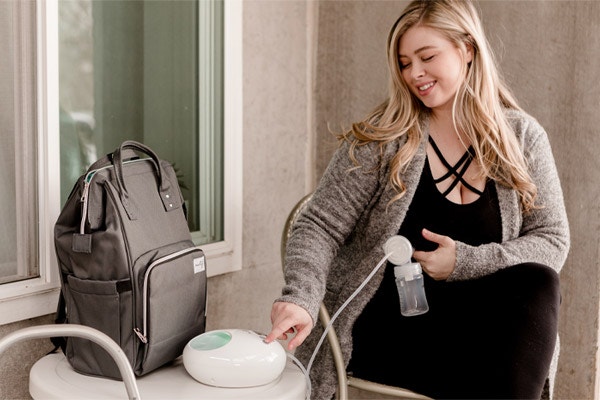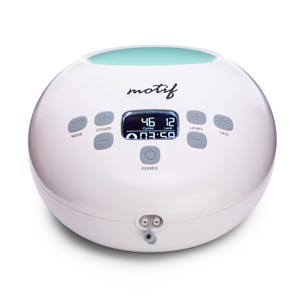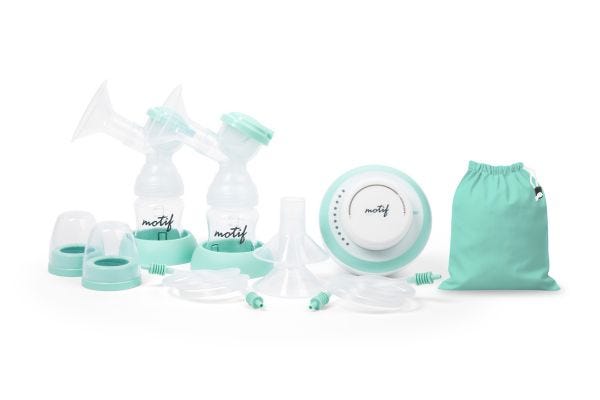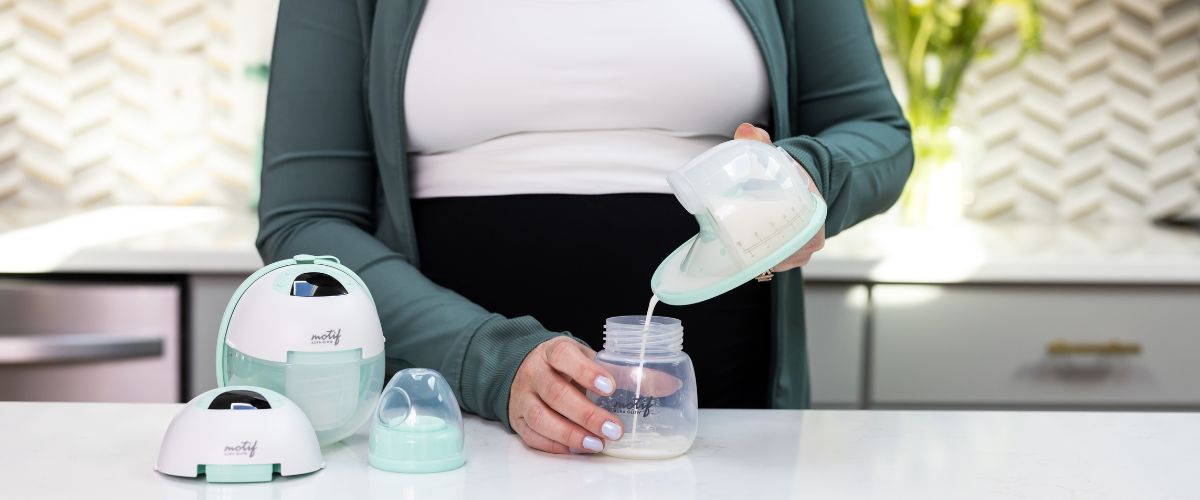Many working moms who breastfeed and exclusively pump face the challenge of pumping during the work day, and they do so successfully with some preparation. As a pumping mom, all you need is a little confidence, a solid plan, and reliable resources. This may be a little more emotional and require a bit of extra planning than expected, but with these top tips, you’ll be prepared to head back to work and meet your breastfeeding and pumping goals.
Use the Right Breast Pump
Not all breast pumps are created equally, so it’s important to research your options to determine the best option for pumping at work. A double electric breast pump will help quickly express milk from both breasts at once. A good electric pump can help you tremendously, especially in the first year.
You will also need a lightweight option for traveling and forth from work unless you leave a spare pump in your lactation room. Silicone hand pumps are great for this and so portable. A pump that is battery powered is a convenient option in case the room doesn’t have an outlet or you find yourself needing to express milk away from the pumping room.
Consider purchasing a quieter breast pump for more privacy.
Make A List, Check It Twice
As a postpartum mom, you’ll find yourself often sleep deprived which can make it hard to pack everything you need while rushing in the morning before work, especially if you’re working full-time. Slow down and create a checklist of everything you’ll need to pack the night before.
Packing the night before will also help you to prevent accidents from happening. Things don’t always go according to plan, but by being prepared a simple mistake won’t have to ruin your whole day or throw off your pumping schedule.
Breast Pump, Bottles, Storage Bags, Pump Parts, Hands-free pumping bra – these and other essentials are great to add to your list.


It may seem like a no-brainer to take your breast pump to work, but it can be easy to forget smaller parts like the diaphragm, cord, tubing, battery pack, breast milk storage containers and bags for expressed milk, and more. Be sure to pack each part or leave an extra pump or parts at work.
Breast Pads & Backup Change of Clothing – Even a passing thought of your baby can make you lactate and soak through your shirt. Stop leaks by packing nursing or nipple pads. Also, always have a backup outfit on hand so you can quickly change if a spill happens. Break time for nursing mothers can often be limited, so having backup plans like changes of clothes are great solutions.
Ice or Ice packs – If your lactation room or pumping space doesn’t have a fridge then you will need to pack a cooler full of ice or ice packs to keep your pumped milk chilled during the day to ensure safe breast milk storage. Pump parts can be kept here, as well, to avoid the need to wash between uses until back at home.
Snacks and Lunch – Breast pumping takes calories. Pack healthy snacks to last all day.
Breast pump wipes – Breast pump wipes are good for quickly cleaning up breast milk in a snap.
A reminder of your baby – It can be difficult to pump away from your little one at first. Take their photo, record a video and even take an article of their clothing to help miss them less and to stimulate milk supply and milk production.


Planning: While At Work
The first few days of breast pumping at work may seem a little chaotic, but don’t give up. You’ll get your schedule down after just a few days.
- Wear button-down shirts or loose fitting clothes to give yourself easy access to your ladies. Also, wear a hands free nursing bra to give you the ability to multitask.
- Stay hydrated. Drink water all day to help stimulate your milk flow.
- Let emotions come. Missing your little one and lactating aren’t easy. If you feel a wave of sadness coming, excuse yourself to your car or a private space until you’re ready to return to work.
- Try to keep your schedule as regular as possible to avoid issues such as engorgement.
- If someone stops you on the way to the breast pumping room, calmly explain that you have something to take care of and you’ll meet with them in about 20 minutes.
- If you forget part of your breast pump or something breaks, don’t panic. You can hand express breastmilk.
- Distract yourself. Take your laptop, work on paperwork or charting, make lists for your day.
Clean your pump in between uses. If your pumping room has a sink wash your pump parts with warm soap and water. Also, some breast pump parts can be sanitized in the microwave and if you need to clean in a snap use breast pump wipes.
Talking To HR and Your Employer About Breast Pumping
It’s your right to continue producing breast milk for your child. Even if it may seem uncomfortable, speak up with your boss or HR professional about breastfeeding. You can seek advice from other moms and put your plan together to feel prepared for the talk. However, it is not only an important factor for women’s rights and your baby’s health, but your health as well. To wait all day to pump is to greatly increase risk of mastitis, engorgement, and low supply.
Let your employer know that you plan to pump and will need to for about 15 to 20 minutes about every 3 hours. This can be accomplished during your morning break, lunch break, and afternoon break. Be flexible with your employer to fit these breaks into your schedule.
It is important to mention what you need in order to successfully pump, such as a private space to do so. Refer to the breast pumping laws to educate and protect your rights.
Under the Fair Labor Standards Act (FLSA) employers with 50 or more employers must provide reasonable break time for mothers to express breast milk for up to a year after their child’s birth. They must also provide a private space other than a bathroom for the purpose of breast pumping.
The space must be free from intrusion of coworkers and the public.


Be sure to tell your employer about your plan to breast pump at work in advance, because if they haven’t created a space for nursing mothers already then it may take some time to create a lactation room.
Even though you’re protected by the law, it is better to not wait until the last minute to bring up your plans to breast pump at work. Give your employer enough time in advance to prepare the facility for breast pumping by creating a lactation room if needed.
Before your maternity leave or a few weeks before returning to work, set up a meeting with your HR representative or manager to bring up the topic of breastfeeding. This will allow you to discuss the current lactation policy, explain what you need, and create a flexible pumping schedule.
Reinforce with Facts & Benefits
It may also help to mention the benefits of breastfeeding, such as:
- Immune factors and human milk designed for exact nutrition requirements
- Healthier babies means less doctor appointments
- Lowers risk of health issues in the mother including, but not limited to:
- Diabetes
- Ovarian and Breast Cancers
- Depression
Employers also benefit from supporting breastfeeding moms with decreased turnover rates, lower health insurance costs, fewer days of missed work, increased workforce positivity, and more.
Successfully Breast Pump At Work
Plan for your return by taking your infant into the office for a visit. While you’re there scope out the pumping room to see what you need. See if there is an outlet for you to power your pump with or if you’ll need batteries. Check if there’s a mini-fridge for milk storage or will you need to bring a cooler with ice packs.
Then practice your routine. See how long it takes you to pack your breast pump supplies while getting ready for work. If you aren’t a morning person, consider packing your items the night before. Also, it can be helpful to have an extra set of pumping supplies in your car or office in case you forget something at home.
Wardrobe
Look at your wardrobe to make sure you’re prepared to pump at work. See if you have shirts that will allow you to pump without having to get totally undressed.
Button downs, nursing tops and scoop necks are best for easy access. The two-shirt method is a great option, too, allowing you to lift the top shirt up and pull the bottom camisole layer’s neck down for access.
Avoid drips and spills. You don’t want to walk around in wet clothes if an accident occurs. Keep a backup outfit on hand in case you need to change, carry wet wipes for quick cleanups, and use a towel to protect your clothes during pumping sessions.


Additional Tips
- If possible, try to return to work during the middle of the week or with a half-day at first to ease into the routine. Slowly work up to your normal workload as well. Remember, you’re still healing and you may be hit by a few emotional waves due to being away from your baby.
- Bring photos of your baby for your desk and an item of their clothing that smells like them to help stimulate your milk flow.
- Take breaks if needed. Step out to call your babysitter for updates and even talk to your little one to cope with missing them.
And most importantly, learn how to say, “no.” Don’t overwhelm yourself with too many projects and expectations. You’re much busier now than you were before. Pumping frequently, at least every 2-4 hours, protects your supply and your health. You don’t have to go to after-work events or on every single retreat. Go ahead and get back home to enjoy bonding with your baby.










